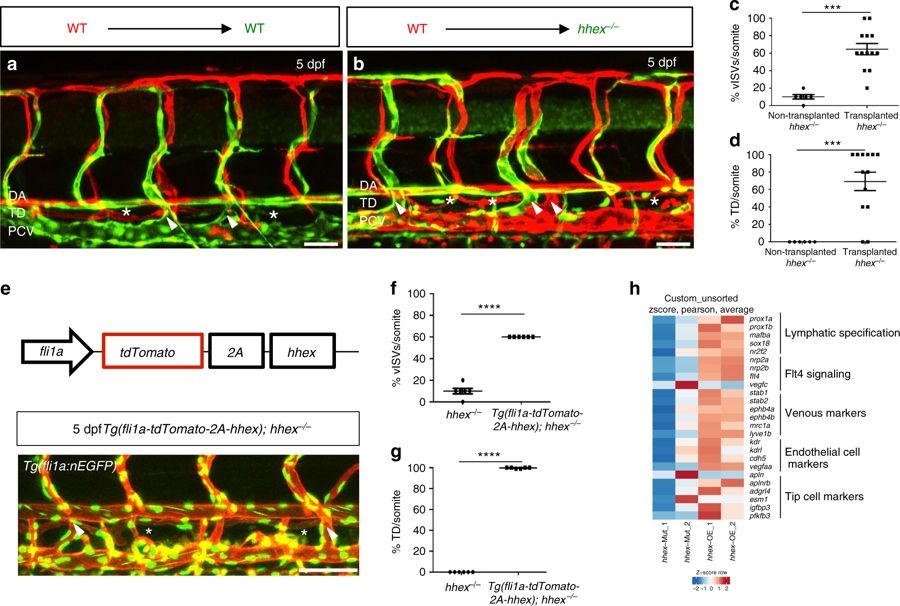Fig. 4
Hhex is required cell-autonomously in endothelial cells to promote venous and lymphatic sprouting in zebrafish. a, b Transplantation of Tg(fli1ep:DsRedEx) donor cells into TgBAC(etv2:EGFP) hosts derived from hhex+/? incrosses. Wild-type endothelial cells contribute to arteries, veins, and lymphatics in wild-type sibling (a) and mutant (b) hosts at 5?dpf (arrowheads point to vISVs; asterisks indicate TD). c, d Quantification of vISVs (c) and TD extensions (d) across four somites in hhex?/? larvae with transplanted wild-type cells (n?=?13) vs. hhex?/? larvae without transplanted wild-type cells (n?=?6) at 5?dpf. Wild-type endothelial cells can partially rescue both vISV and TD formation in hhex?/?. e hhex endothelial overexpression strategy using the fli1a promoter partially rescues the hhex?/? vascular phenotype (arrowheads point to vISVs; asterisks indicate TD). f, g Quantification of vISVs (f) and TD (g) extensions across four somites in hhex?/? (n?=?6) and Tg(fli1a:tdTomato-2A-hhex); hhex?/? (n?=?6). h RNA sequencing of 48?hpf FACS-sorted hhex?/? endothelial cells and hhex-overexpressing endothelial cells. Heat map comparisons between these datasets identify Hhex as a regulator of genes implicated in lymphatic specification (prox1a, prox1b, mafba, sox18, nr2f2) and Flt4 signaling (nrp2a, nrp2b, flt4, vegfc) while endothelial cell markers are modulated only by endothelial-specific hhex overexpression. Values represent means?±?s.e.m. ****P???0.0001 and ***P???0.001 by t-test. Scale bars: 50??m

